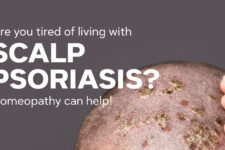Vitiligo, a condition marked by the loss of skin color in patches, can be a challenging and distressing experience for those affected. While there is no definitive cure for vitiligo, various treatment options exist to manage its symptoms and improve quality of life. Among these options, homeopathy offers a holistic approach that aims to address the underlying causes of the condition. Let’s delve into vitiligo, its causes, symptoms, and how homeopathy can be a valuable treatment avenue.

What is Vitiligo?
Vitiligo is a pigmentation disorder characterized by the loss of melanin, the pigment that gives skin its color. This results in white patches on the skin, which can appear anywhere on the body. While the exact cause of vitiligo is not fully understood, it is believed to involve a combination of genetic, autoimmune, and environmental factors.
Symptoms of Vitiligo
The primary symptom of vitiligo is the presence of depigmented, or white, patches on the skin. These patches may initially be small and localized but can gradually enlarge and spread over time. Vitiligo can also affect other parts of the body with pigment, such as the hair and the mucous membranes.
Homoeopathic approach
Homeopathy, a system of alternative medicine founded on the principle of “like cures like,” approaches vitiligo treatment by addressing the individual’s overall health and constitutional makeup. Rather than targeting the symptoms alone, homeopathic remedies aim to stimulate the body’s natural healing processes and restore balance.

Common Homeopathic Remedies for Vitiligo
1. Arsenicum album: This remedy is often prescribed for vitiligo accompanied by burning sensations or itching in the affected areas. It may also be recommended for individuals with a history of anxiety or restlessness.
2. Sulphur: Sulphur is a commonly used remedy for various skin conditions, including vitiligo. It is often indicated when there is intense itching, burning, or heat in the affected areas. Individuals who benefit from Sulphur may also experience worsening of symptoms with heat and washing.
3. Natrum muriaticum: This remedy is prescribed for vitiligo associated with grief, emotional stress, or suppressed emotions. It is particularly useful for individuals who tend to withdraw or isolate themselves from others.
4. Graphites: Graphites is indicated for vitiligo with a tendency to form thick, rough, or cracked skin. It may be recommended when there is a history of eczema or other skin conditions alongside vitiligo.
5. Calcarea carbonica: Calcarea carbonica is prescribed for vitiligo in individuals who are overweight or have a tendency to sweat excessively. It may also be indicated when there is a history of sluggishness or fatigue.
Consultation with a Qualified Homeopath
It’s essential for individuals with vitiligo to consult with a qualified homeopath for personalized treatment. During the consultation, the homeopath will take into account the individual’s physical, emotional, and mental symptoms to determine the most suitable remedy or combination of remedies.
Conclusion
While vitiligo can be a challenging condition to manage, homeopathy offers a gentle and holistic approach to treatment. By addressing the underlying imbalances in the body and stimulating its natural healing mechanisms, homeopathic remedies can help individuals with vitiligo experience improvements in their symptoms and overall well-being. If you or someone you know is struggling with vitiligo, consider exploring the benefits of homeopathic treatment under the guidance of a qualified practitioner.



